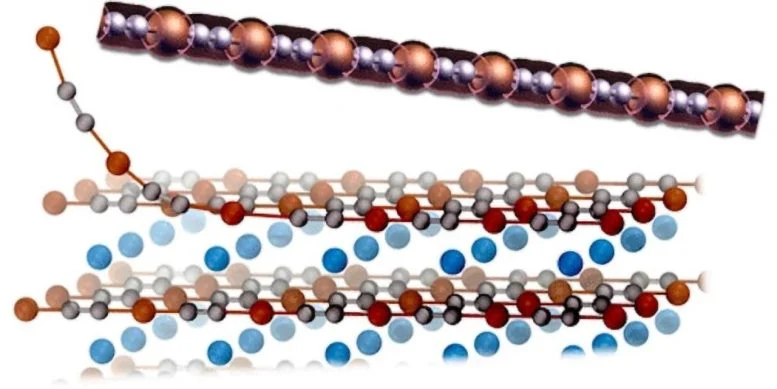EPFL’s NCCR MARVEL researchers used computational tools to investigate new one-dimensional materials that can be extracted from known three-dimensional crystals, including the thinnest metal nanowire stable at 0 K ever found.
Researchers at EPFL used computational tools to find new one-dimensional materials that can be peeled from known three-dimensional crystals. From an initial list of more than 780,000 crystals, they compiled a list of 800 one-dimensional materials from which they selected the 14 best candidates; compounds that have not yet been synthesized as real wires, but simulations have shown that they are possible. . Among these, there is CuC metal wire2It is a linear chain of two carbon atoms and one copper atom and is the thinnest metal nanowire ever stable at 0 K.
Research of nanomaterials
Researchers at EPFL’s Materials Theory and Modeling Laboratory have used computational methods to determine what the thinnest metal wire could be, as well as several other one-dimensional materials with properties that could be interesting for many applications.
One-dimensional (or 1D) materials are one of the most interesting products of nanotechnology and consist of atoms arranged in wires or tubes. Their electrical, magnetic and optical properties make them excellent candidates for applications in diverse fields, from microelectronics to biosensors and catalysis. Although carbon nanotubes are the materials that have attracted the most attention so far, they have proven very difficult to produce and control; Therefore, scientists are eager to find other compounds that can be used to create nanowires and nanotubes with the same interesting properties. but lighter. To resist.
Defining 1D structures
Chiara Signarella, Davide Campi and Nicola Marzari therefore decided to use computer simulations to study known three-dimensional crystals, looking for crystals that, based on their structural and electronic properties, actually looked like they could be easily ‘peeled’ from them. stable 1D structure. The same method has been used successfully in the past to study 2D materials, but this is the first application to one-dimensional counterparts.
The researchers started with a collection of more than 780,000 crystals, taken from various databases found in the literature, held together by van der Waals forces, a type of weak interaction that occurs when atoms are so close that their electrons overlap. They then applied an algorithm that took into account the spatial organization of their atoms, looking for those containing wire-like structures, and calculated how much energy would be needed to separate this one-dimensional structure from the rest of the crystal.
Opening the thinnest metal wire
“We specifically looked for metal wires that are expected to be difficult to find because 1D metals should not, in principle, be strong enough to allow exfoliation,” says Signarella, the first author of the paper.
Finally, they compiled a list of 800 one-dimensional materials and selected the 14 best candidates; compounds that have not yet been synthesized as real wires but which simulations have shown are possible. They then began calculating their properties in more detail to see how stable they would be and what kind of electronic behavior should be expected from them.
Groundbreaking discoveries in nanowire research
The most interesting were four materials: two metals and two semimetals. Among these, there is CuC metal wire 2 , a linear chain consisting of two carbon atoms and one copper atom, is the thinnest metal nanowire ever stable at 0 K. “This is really interesting because you wouldn’t expect a real array of atoms along a single line to be stable in a metallic phase,” Signarella says. Scientists discovered that it could be stripped from three different parent crystals (NaCuC), all known from experiments.2KCuC2 and RbCuC2). Little energy is required to remove them, and its circuit can be bent while retaining its metallic properties, making it interesting for flexible electronics.
Other interesting material found in a published work ACS Nano, contains the semimetal Sb2Te2Thanks to its properties, it could enable the study of exotic states of matter called exciton insulators, which were predicted 50 years ago but never observed. It is one of the rare cases where quantum phenomena become visible on a macroscopic scale. Then there is Ag2Look2another semimetal and TaSe3It is a well-known compound that has been exfoliated as nanowires in experiments and is the only compound that scientists use as a reference.
Implications and future research directions
As for the future, Signarella explains that the group wants to team up with experimentalists to actually synthesize the materials, continuing computational studies to see how they carry electric charges and behave at different temperatures. Both things will be fundamental to understanding how they will work in real applications.













